

By Sensei Jon Hodge
Shotokan Karate is a dynamic martial art style created by the late, great Gichin Funakoshi. The style is characterized by highly concentrated striking, forthright blocking, powerful stances, and a series of captivating kata.
Shotokan is a form of self defense that's built like a strong house - first a formidable foundation is molded within a student, and then one brick is layered on at a time.
Rather than including endless variations and techniques, the style focuses on a handful of powerful blocks, strikes, and kicks - and then perfecting the body alignment and concentration required to place them within an actual fight.
This guide is designed for complete beginners to the style. You will be introduced to the style’s beginnings, the purpose of the various training types, and some practical knowledge on its basic movements. This is a crash course in the white-belt level of the style - focusing on the foundational movements, rather than the complex combinations and sequences (kata).
Table of Contents
- History
- Training Goals
- Etiquette
- Curriculum Sections
- Stances (Tachikata)
- Punches (Tsuki)
- Blocks (Uke)
- Kicks (Geri)
- Testing
- Onward (Next Curriculum Sections)
- Choosing an Organized Training Program.
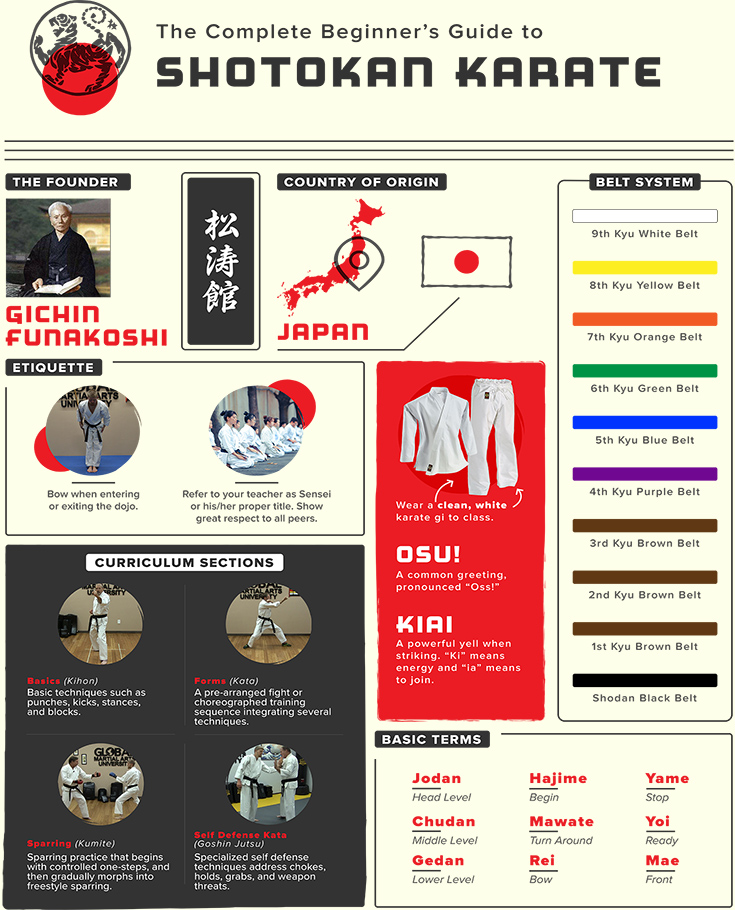
History
Shotokan Karate's founder, Gichin Funakoshi, was born in 1868 in Okinawa (an island south of mainland Japan). In his childhood, he studied karate under two masters (Master Itosu and Master Azato). In this period, the transfer of knowledge of a martial art was more secretive and not a public affair. It was a deep honor to have the opportunity to learn from a true master. As a young man, Funakoshi became a school teacher.
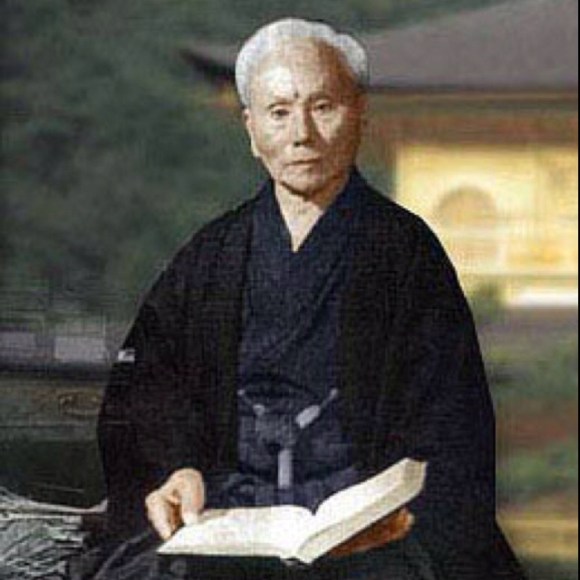
Ginchin Funakoshi
The practice of karate was becoming more recognized and desired by the masses. Seeing this as a good time to spread the art to others, Funakoshi introduced karate into the public school system in Okinawa.
Everything changed for karate in 1922. It was then that the Japanese Ministry of Education held a martial arts demonstration in Tokyo. Funakoshi was invited to demonstrate his style of karate - it was a hit. He received so much interest that he decided to stay and open the first karate school in mainland Japan. (Back in this time, Judo was much more popular in the country). The dojo was called Shotokan (“Kan” means “building”, “Shoto” means “pine waves”, which happened to be Funakoshi's pen name).

Japan

Funakoshi authored the book titled, “Karate-Do : My Way of Life” as a more mature instructor. His teachings transcended the physical, and tended to guide his students toward mindfulness and spiritual improvement.
Since Funakoshi’s passing in 1957, the martial arts landscape has dramatically changed thanks to his impact and teaching philosophy. Some Shotokan students have drifted in the direction of competition sparring, whereas others adhere to his original practice of kata and self-mastery.
Training Goals
Students begin their Shotokan training for a variety of reasons, but they tend to boil down to one thing: self-improvement. In other styles, a student might be driven by fear or street-ready self defense (Krav Maga, for example), or to become more athletic or attend the Olympics (Tae Kwon Do). Before you start training, hold a vision for where you are trying to go with this, so that you can check your own progress along the way.
Some training goals that you should set for yourself:
- Improve my reaction time.
- Increase my body’s range of motion and flexibility.
- Tone my muscles and increase functional strength.
- Gain a high level of self-control, both physically and mentally.
- Reach a zone of no-mind, where I am completely in the moment and absorbed into the movements.
- Have great humility and respect for life and other martial artists.
- Be able to defend myself or my family in an empty-hand situation.
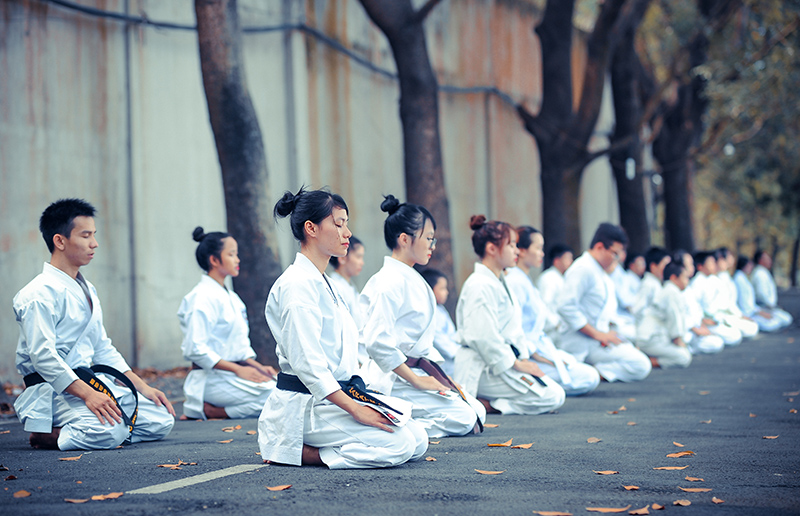
Etiquette
For students who train in a local dojo, there is some traditional etiquette that should be followed. This can vary depending on association, instructor, and location. It is always best to ask your local instructor. Let’s review some, below:
Osu! - Pronounced “Oss,” this is nearly a catchall word that is backed by positivity and respect. It could be translated (depending on the usage) to mean: “hi”, “hello”, “goodbye”, “respect”, “push it”, “great!.” It is a common greeting between karateka (students of karate).
Entering the Dojo - It is expected that you will bow when entering and exiting the dojo. In some schools, you will bow immediately before walking onto the mat.
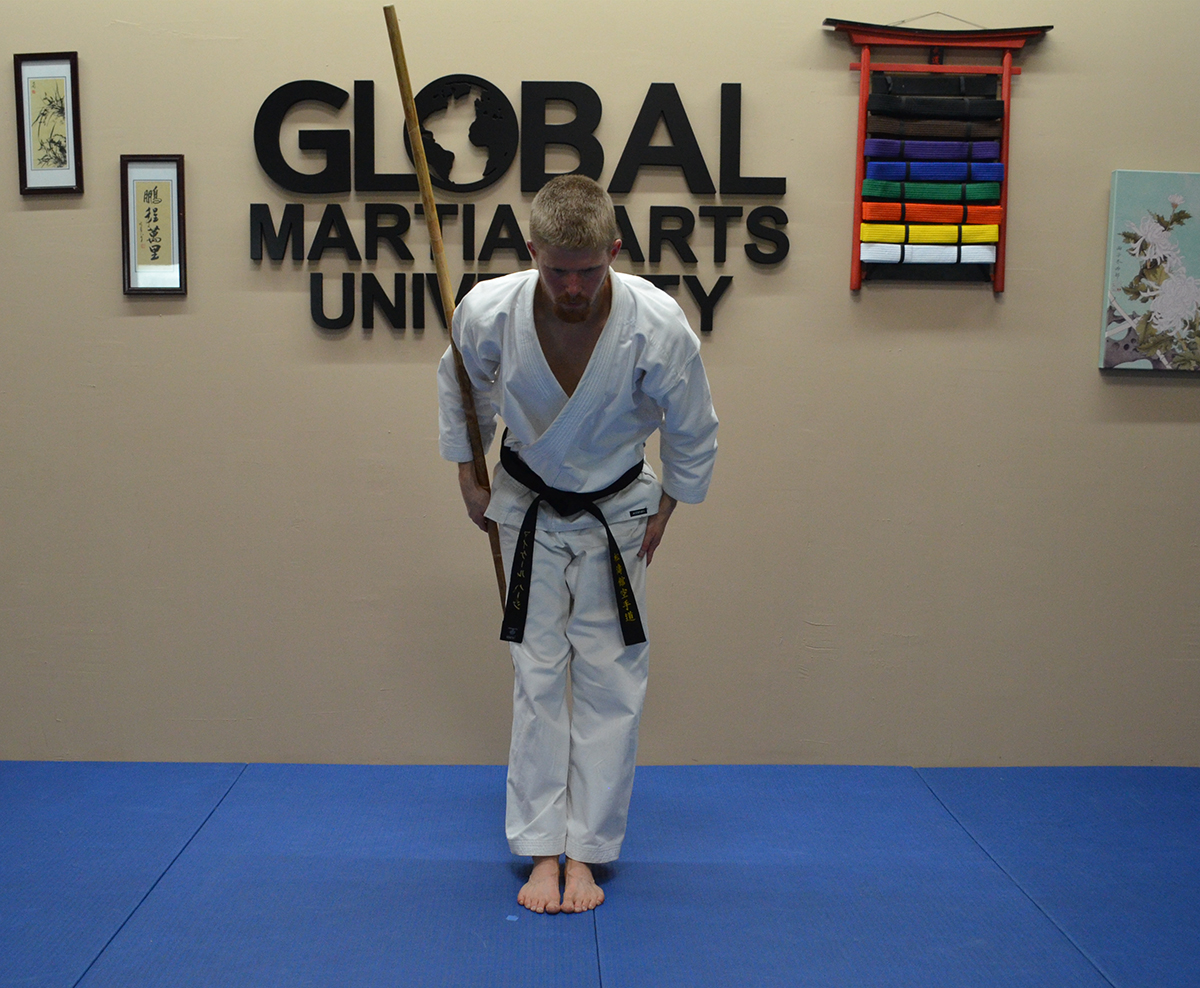
Bowing - Bowing to your Sensei and peers will happen from time to time. To bow: bend at the waist, about 20 degrees forward, unbend.
Bowing on Knees (Seiza) - Some classes begin with an opening sequence, in which students sit down on their feet (low kneeling), meditate, and then bow when directed.
Kiai - Pronounced “kee-eye,” this is the powerful yell that’s often used while striking in a class. “Ki” meaning energy and “ai” meaning join. A powerful yell will give you a convergence of energy and infuse more into the technique at hand.
Addressing Your Teacher - Typically, if following the Japanese-language syntax, an instructor will be referred to as Last Name-Sensei (such as Smith-Sensei), or even First Name-Sensei (Jon Sensei). If they are English speaking and are attempting to make use a smoother title, they might be addressed as “Sensei-First Name” or “Sensei-Last Name.” An advanced black-belt instructor might be referred to as “Shihan” or “Kyoshi.” It is always a good idea to ask in advance or mimic your peers.
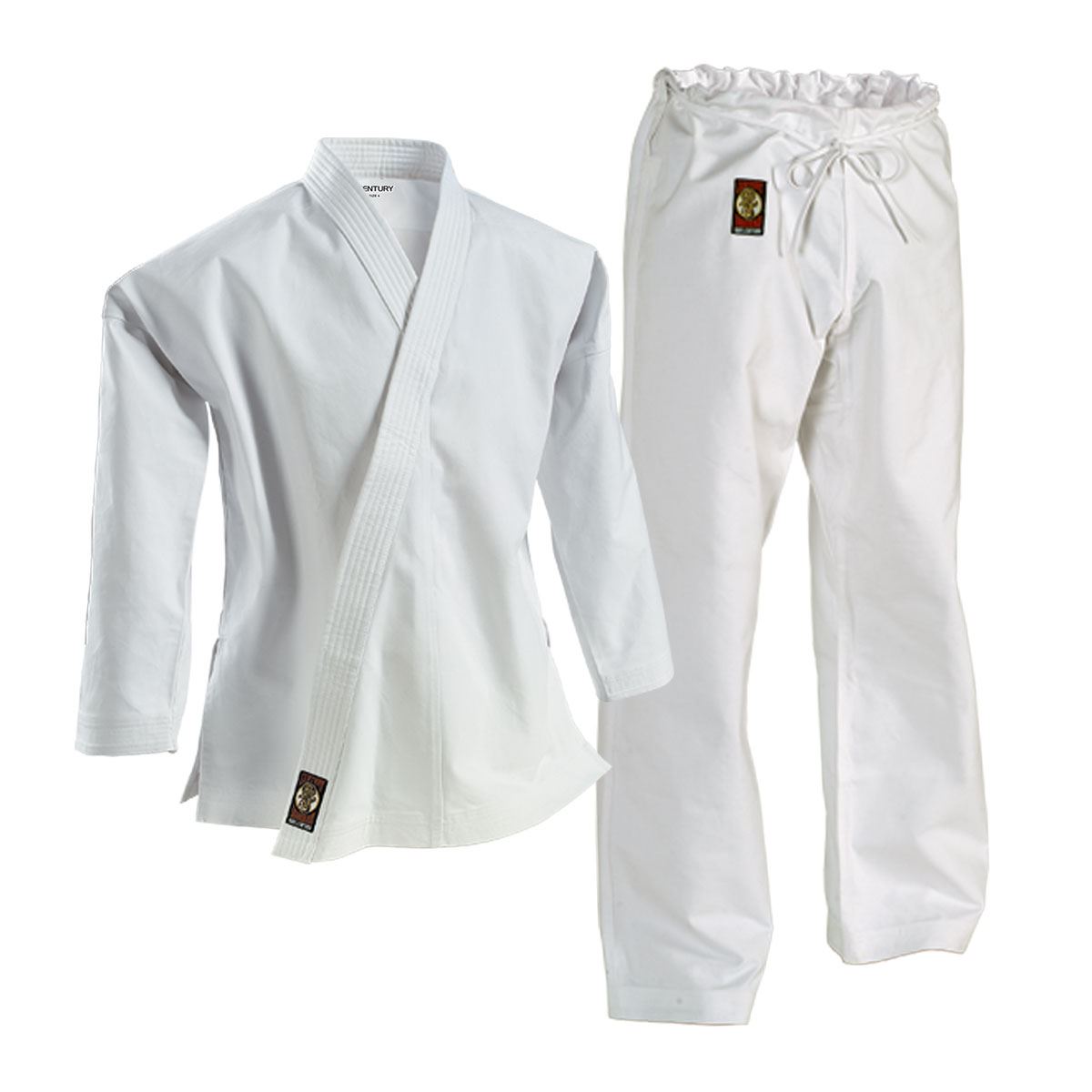
Uniform - Students are expected to wear a full uniform, or gi (pronounced "ghee"). A pure white gi, well cleaned and taken care of it the norm for Shotokan.
Curriculum Sections
The official Shotokan syllabus is broken down into different curriculum sections. These are different types of training, each with their own purpose.

Basics (Kihon) - At each belt level, you will learn a set of basic techniques. These are the Stances (Tachikata), Punches (Tsuki), Blocks (Uke), and Kicks (Geri). You will learn the sequence of body movement, proper targets, correct stances, practical applications, and other subtleties.
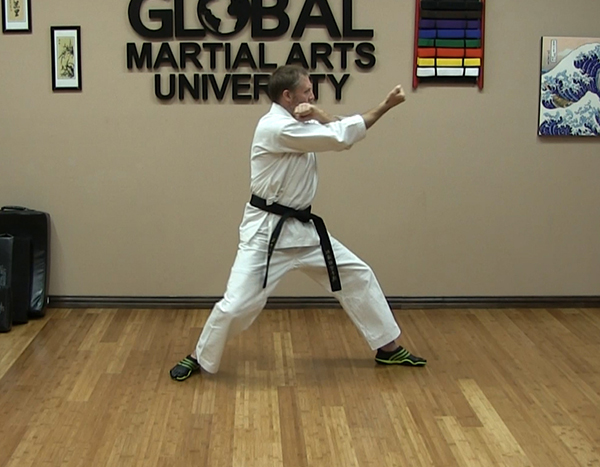
Forms (Kata) - A cornerstone of Shotokan karate is the kata. A kata is a pre-arranged fight or choreographed training sequence. The techniques are demonstrated the same way, in the same pattern, every time. With a goal of constant improvement in the technical proficiency and effectiveness of the movements within the predefined sequence. Kata training grew out of a need for effective training, while mitigating the injury on training partners, and has been used since the day of the samurai (for kenjutsu - sword training).
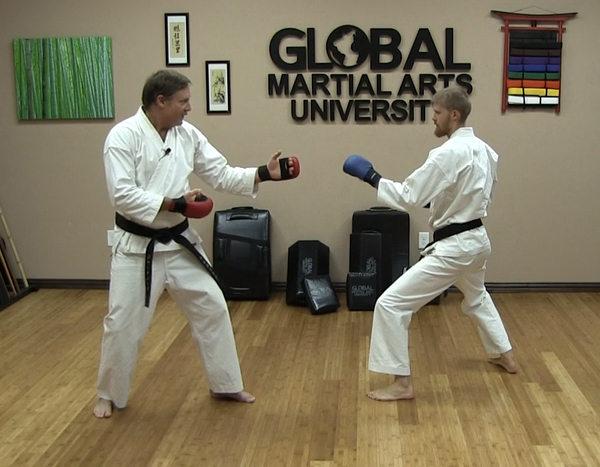
Sparring (Kumite) - Students begin with a simple, controlled form of self defense and counterattack practice called Ippon Kumite (One Step Sparring). As you move through the belts, you will graduate to Sanbon Kumite (Three Step Sparring), Gohon Kumite (Five Step Sparring), Kaeshi Ippon Kumite (Counter-Attack Sparring), and eventually Jiyu Kumite (Freestyle Sparring).
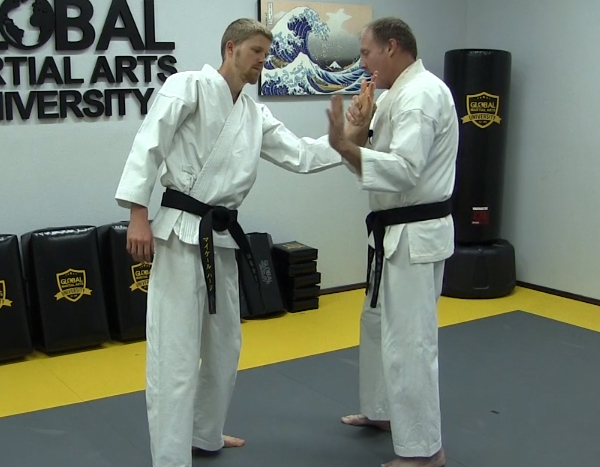
Self Defense Kata (Goshi Jutsu) - Advanced students will also learn specialized techniques to address wrist grabs, chokes, holds, blunt and bladed weapons, and firearms.
Stances (Tachikata)
Now let’s jump into the beginner stances of Shotokan karate. There is no skipping over this section. Without a strong foundation the rest of your techniques will diminish in value.
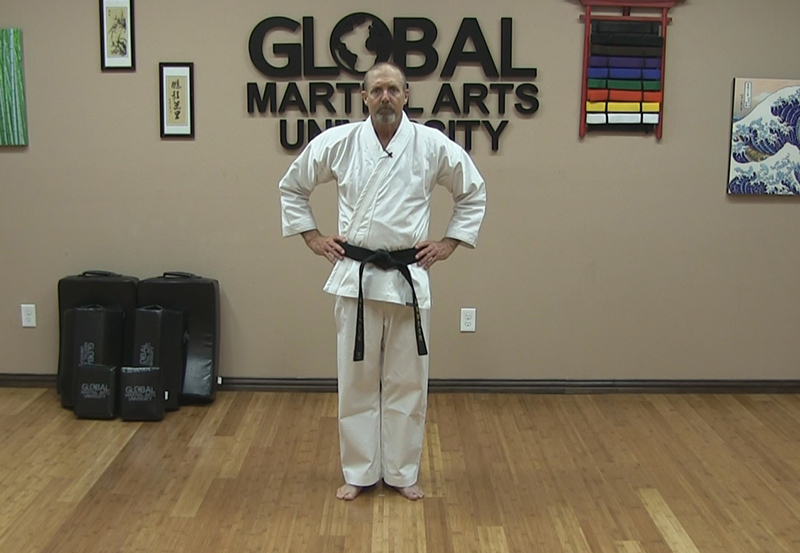
Attention Stance (Musubi-Dachi) - Vee-stance, heels together, toes apart. This is a beginning attention stance, from which we bow (rei).
- “V” stance
- Heels together, toes apart
- Hands relaxed at the sides
- Each foot opens to an angle of roughly 30°.

Natural Stance (Shizentai) - Used as a ready stance. In preparation for the next movement or as a semi-relaxed position for static training.
- Feet about shoulder-width apart
- Standing naturally, slight bend in knees
- Toes are pointed straight forward.
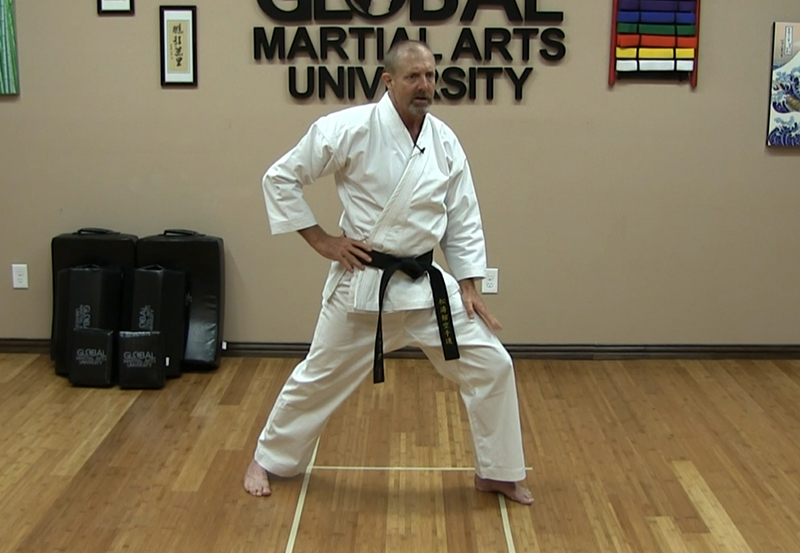
Front Stance (Zenkutsu-Dachi) - The front stance, used for lunging or forward moving strikes or blocks. Also, very common in kata.
- Slightly wider than shoulder-width
- Front foot toes are straight forward
- Back foot is turned outward at close to 45°
- Front knee is bent (you can just see your toes when you look down)
- Back knee is barely bent
- 60% of weight is on front leg, 40% on the back leg.
Punches (Tsuki)
Now we will begin learning the basic punches. Before you can throw proper punches, you need to know how to make a proper fist:
- Curl your fingers so that the tip of each finger touches its base
- Fold your thumb down across the middle of your index finger and middle finger
- Strike with the two main knuckles of the index finger and the middle finger
- Keep a straight wrist when striking
- Stay relaxed in-between strikes, and tighten up just before impact.
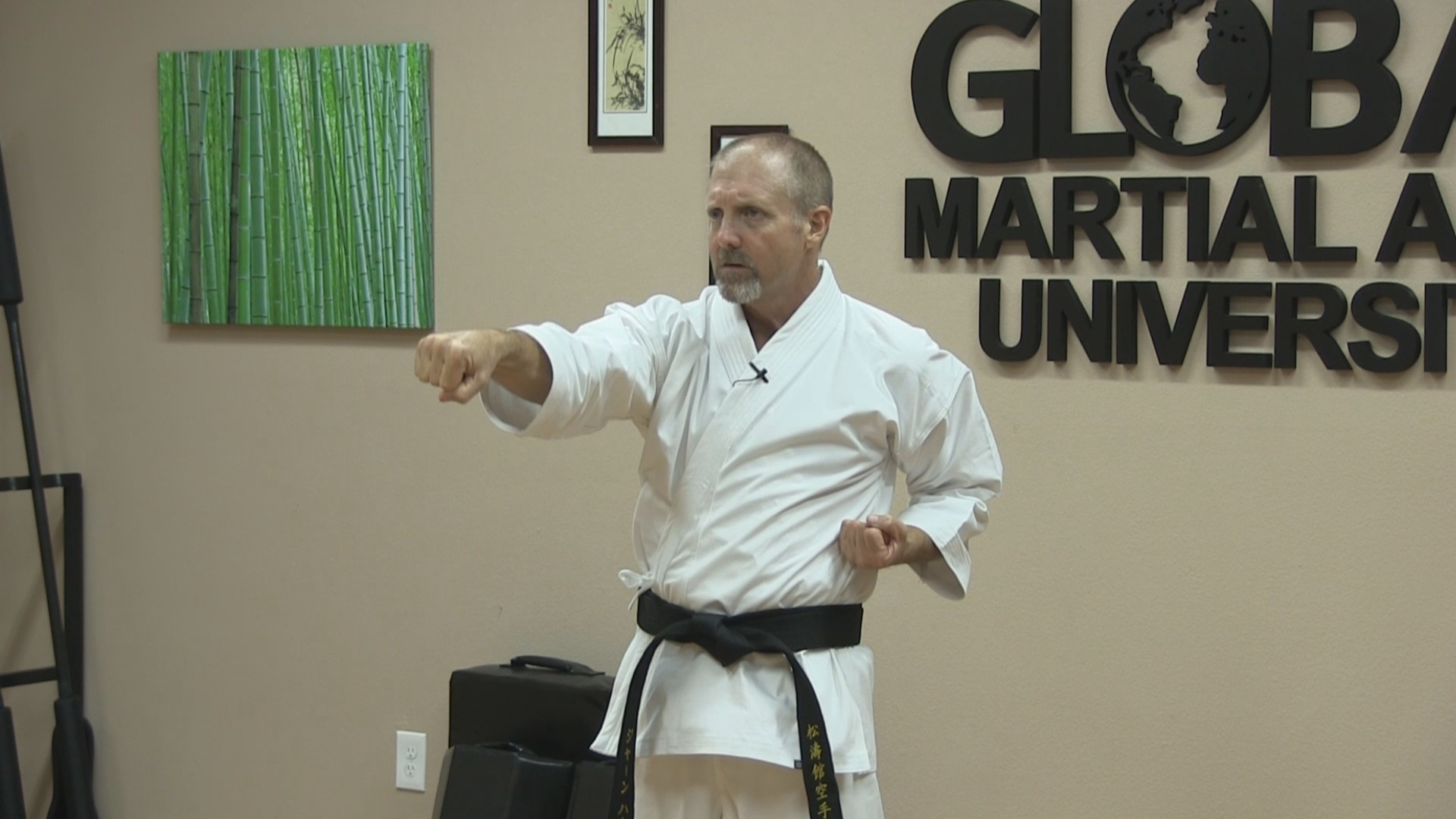
Straight Punch (Choku-Zuki) - A straight punch practiced from a natural stance (shizentai), rather than lunging forward or defensively.
- Mark the target with one hand pointed forward (to center, such as solar plexus)
- Pull the extended arm in, as you simultaneously push out the other arm with the palm facing up
- Continue pushing the punch forward, and add the extra torque by turning the fist into it finished position, striking with the two large knuckles.
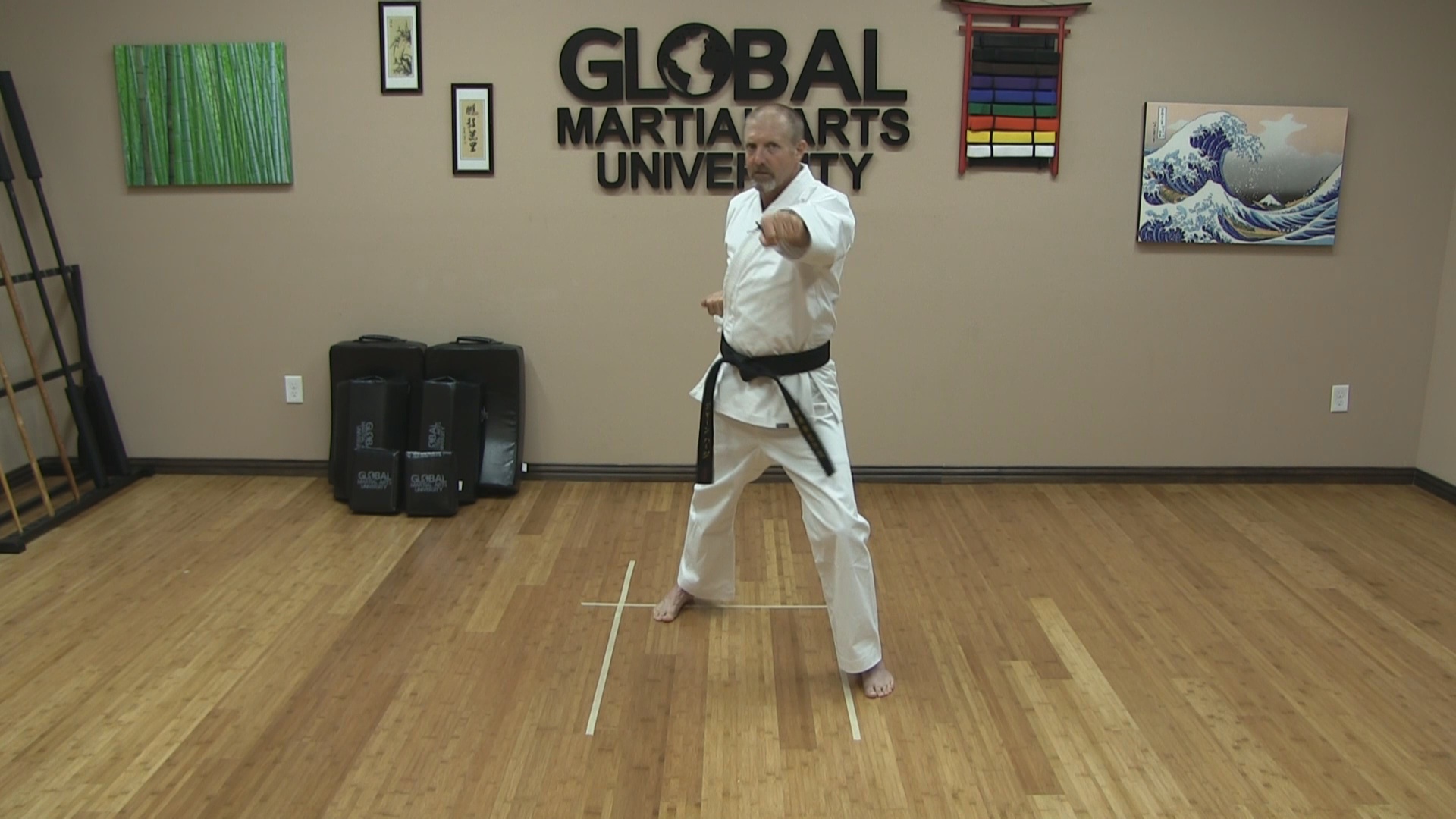
Front Lunge Punch (Oi-Zuki) - With this punch, we essentially execute a straight punch (choku-zuki), while stepping out into a front stance (zenkutsu-dachi).
- Mark the target (solar plexus - chudan level) with the non-punching arm
- Step out with the punching leg into a front stance
- Push the front hip forward as you extend the punch into the final position, also pushing the front pectoral forward.

Reverse Punch (Gyaku-Zuki) - Punching with the back arm (opposite to the leg that is in front), from a front stance.
- Mark the target with the front arm, as you twist your torso/hips some to the outside
- Pull the front arm back to the right hip hard as you rotate your hips and punch the back arm forward to the target.
Blocks (Uke)

Down Block (Gedan Barai) - A downward block to stop an incoming low-line strike such as a kick.
- The blocking arm starts by the ear.
- The non blocking arm is straight, hand in a fist, belly button high, pointed downward.
- The blocking arm slides down along the top of the non-blocking arm.
- When the blocking arm gets to the wrist of the extended non-blocking arm, pause (as a beginner), exhale rapidly.
- Step forward into your front stance, as you finish the block completely.
- The blocking arm should roughly three fist lengths higher than the front leg.
- The other arm is at the ready position, next to the hip.
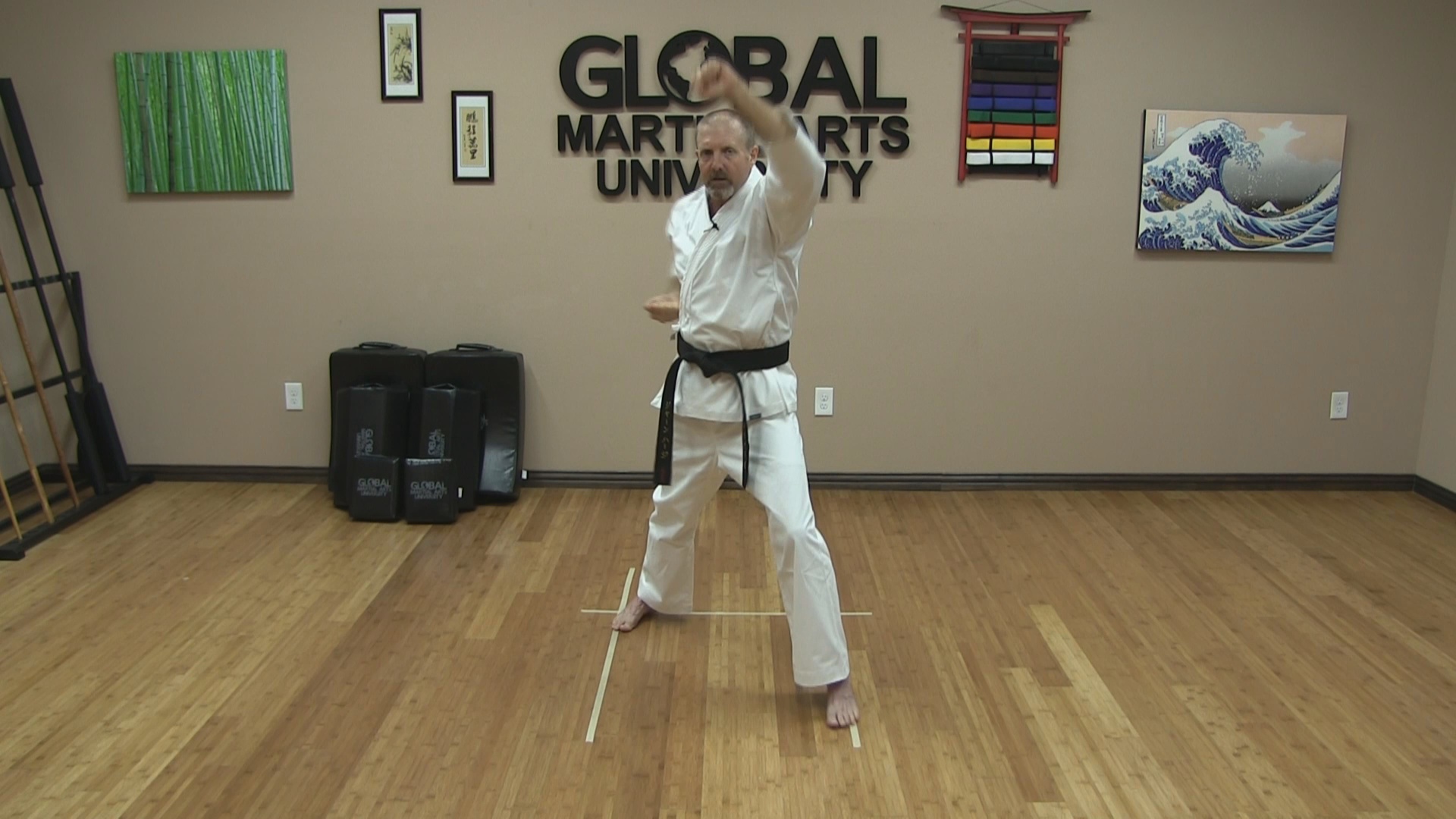
Rising Block (Age-Uke) - A powerful upward block to stop an incoming descending strike or high line attack to the head.
- Mark the target with the non-blocking arm (in this case by pointing up and to the corner where you will be “high-blocking.”
- Half step out into a shortened stance (moto-dachi), as you raise the blocking arm in front of the marked arm.
- Finish the full step into your front stance, completely extend the blocking arm up and simultaneously return the non-blocking arm to the ready position at the other hip.
- The forearm is turned facing out; the wrist and forearm are in alignment.
- Your body/stance is behind the block.
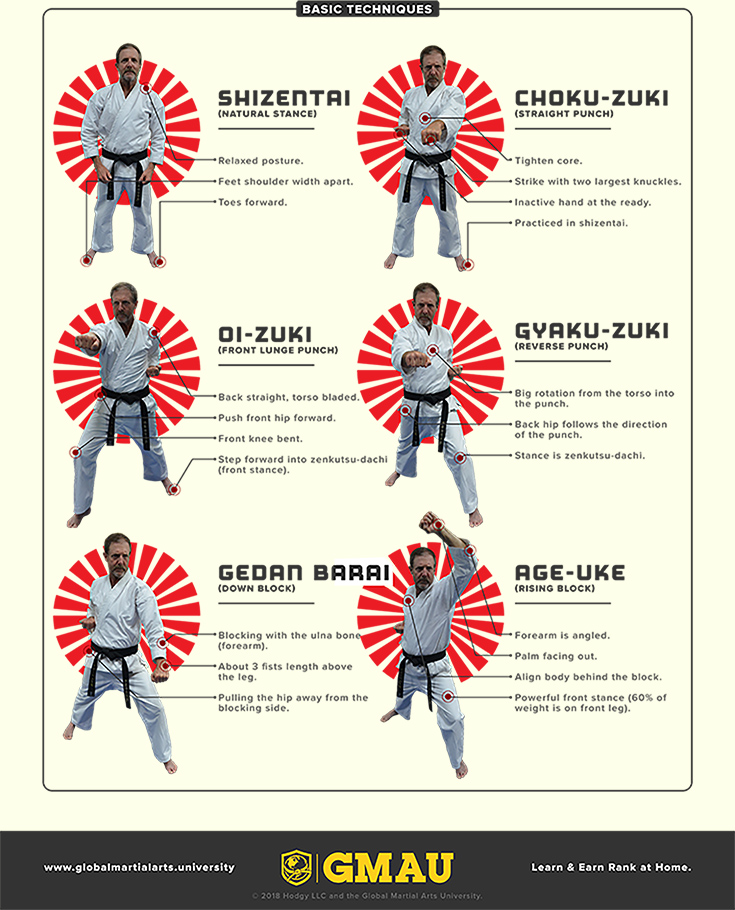
Kicks (Geri)
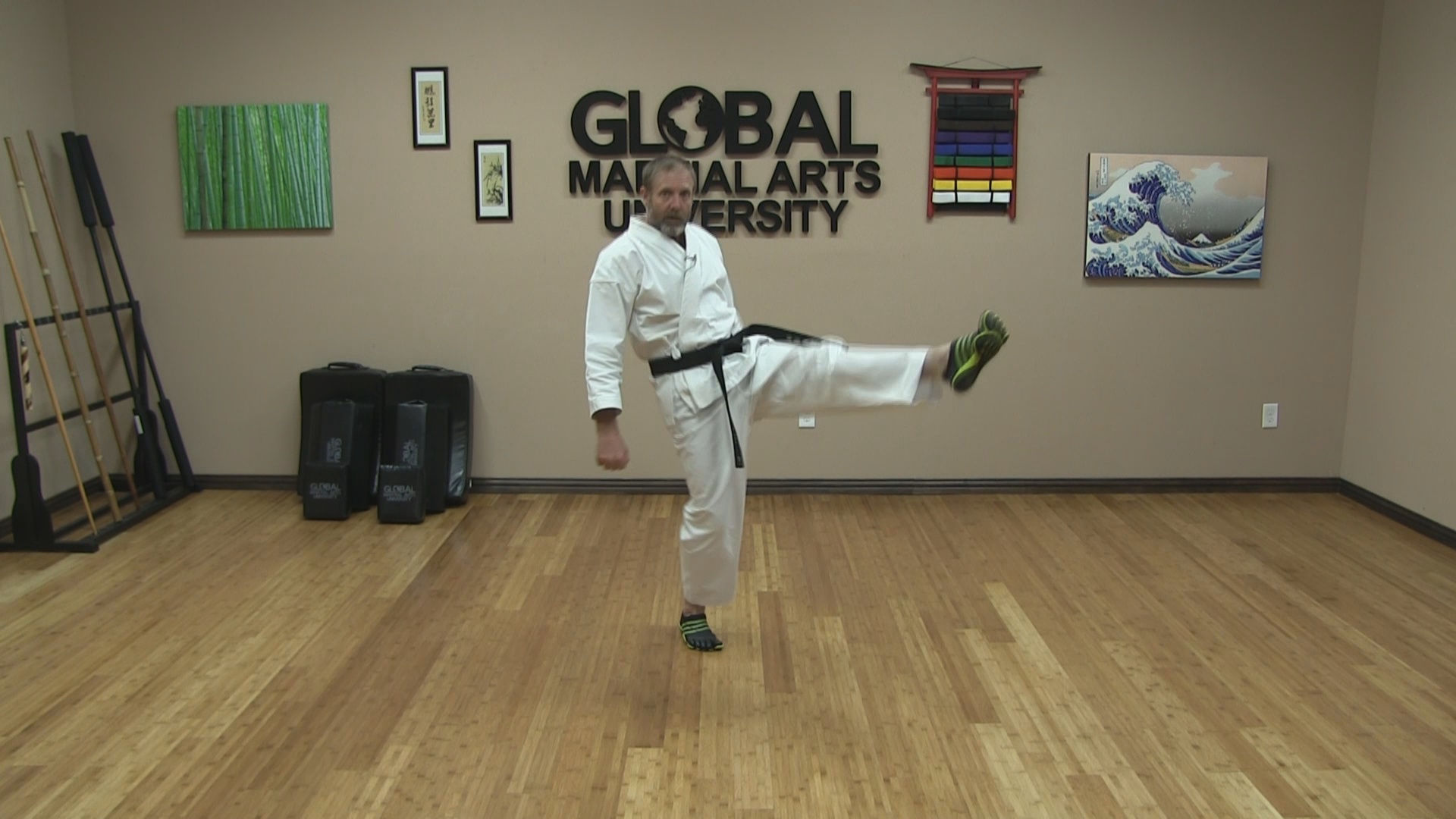
Front Snap Kick (Mae-Geri Keage) - A snapping kick that uses the ball of the foot as the weapon. Usually targeted at the knee, groin, solar plexus, or perhaps chin.
- Have a stable posture.
- Raise your kicking knee.
- Curl the toes backward, to expose the ball of the foot.
- Lean back slightly to create more extension of the leg.
- Extend your hands down at each side for balance and to create leg control.
Testing
If you're interested in earning accredited rank in Shotokan karate, you will need to complete a test. Whether you attend a local dojo or an online dojo, there are certain requirements that will need to be met before you can even test. These usually include: a minimum of hours or time trained before you are eligible to test, earning required stripes, and a level of attendance.
A Shotokan test typically involves:
Kihon - Students demonstrating kihon in combination kihon drills.
Kata - Students will demonstrate the require kata or multiple kata for that belt level.
Kumite - Students will demonstrate any kumite for that level. More advanced levels will spar.
The key to passing a test is preparation. It's also important that you don’t create unnecessary anxiety or stress regarding the testing process. Testing is really just a marker for your own personal progress on your black-belt journey. It also gives your instructor the opportunity to push you to a new level of excellence, while opening up many opportunities for useful feedback.
Onward (Next Curriculum Sections)
Now that you’ve been introduced to the fundamentals of Shotokan, including the stances, blocks, punches, and a kick - it's time to look onward. The next section of your training will include:
Kihon Drills - Combining techniques or practicing them individually in a static natural stance, or via floor drills (in a front stance).
Kata - Learning a full pattern of movements in a methodical way. The first kata(s) you can expect to learn are Taikyoku Shodan and Heian Shodan.
Kumite - To add another layer, kumite will involve a training partner. The first step in learning Shotokan self defense is Ippon Kumite. These are basic one-step sparring practices, which involve a single attack and defense.
In the beginning, your focus will be simply learning where everything goes -- the sequence of movements, how they relate to your body’s motion, and the proper stances to use.
You will then integrate all of this knowledge together into a dramatic body of work, called a kata. Katas are used to help perfect your techniques in a combined way.
Another layer is breaking down a kata and really understanding what your movements are doing - we call this bunkai.
The final layer is taking the techniques to a realistic fighting level, practicing kumite with partners, and building up confidence so you're prepared for anything.
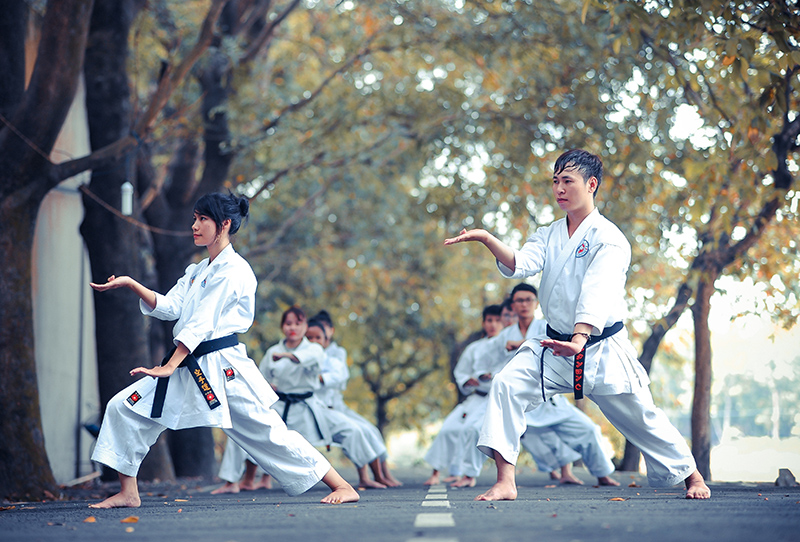
Choosing an Organized Training Program
To continue your Shotokan journey, you will need an organized training program and instructor to guide you and hold you accountable. Here are a few options:
Local School - If you have any friends who practice Shotokan, ask for a personal referral to a great local dojo. If you don’t, do some web searches. Take the time to read every Google or Facebook review of the school. Watch clips of classes, check out photos, and research the school’s website. If there's a major lack in its web presence, this is usually a red flag. However, there are still some very small clubs that are not interested in making it easy to find them, and a phone call or free class can be a worthwhile endeavor. Typically, you want to feel that the school’s culture and instructor’s personality will be a good fit for your learning styles and goals.
Online School - If there's no qualified school nearby or you're unable to attend their class schedule or afford their tuition, consider an online school. Learning karate online is becoming more and more possible with extremely comprehensive video lessons, classes, and instructor feedback. Choose a program that has a well-laid out complete curriculum from white to black belt, plenty of training material (such as classes, workouts, and other extras), an interactive community, a rigorous testing system, instructor feedback, and a self-paced model.
Want even more? Sign up for our Free Online Shotokan Karate Course to learn even more techniques and take some full follow-along classes like you’re in an actual dojo. You’ll get free access to beginner's training to start your Shotokan Karate journey.




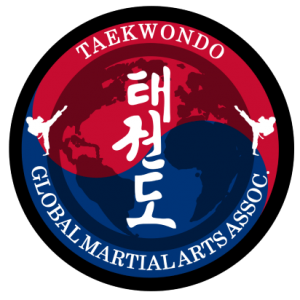


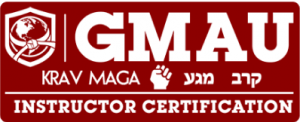



Great blog! I found it really interesting & informative. It would be brilliant if each course could produce a similar blog.
Very good introduction to a begginer, easy to follow and quite informative.
Hunjer – thank you for that feedback. I am pleased to hear you enjoyed the post. Happy training!
Thank you sir for this basic guide on how to learn karate.
Thanks a ton for this comprehensive yet precise introduction to Shotokan. The basic stances, punches, and kicks have been explained in an easy-to-understand format.
You’re very welcome, Laila! Thanks for your kind words about the GMAU Shotokan Karate program 🙂
THANKS FOR THIS AWESOME AND EDUCATIVE TRAINING INFORMATION
You are welcome. Thank you for the kind words.
Excellent read so helpfull, thanks so much
Thank you for the feedback. Happy training to you!
Excellent. Really good training. Thank you!
I am an Instructor for the Shotokan style and after reading this material it makes it so much easier to make it easier my students to understand the instruction methods being taught here. They go into depth for one on one instruction if you are just beginning and don’t understand it much. This material is well constructed.
Thanks for your positive comments, Robert. At the GMAU, we work hard to keep all our training prograns at the highest level possible while being easily understandable by everyone. And our instructors are among the best in their styles.
Oss!
Pingback: Beginner’s Guide: How to Learn Karate Quickly – Supervillain U
Pingback: Beginner’s Guide to How to Do Karate – Supervillain U
Good day.Awesome indeed.Can I please have videos and documents am based in Cameroon
Hi Akide,
Thanks for your interest in training with us. Please note that we don’t send videos or documents. All of our courses are taken online through video streaming. Please see our website for information on our martial-arts courses: https://globalmartialarts.university/
And if you have any questions or need help registering, please reach out to us on our Student Support Portal at: https://globalmartialarts.freshdesk.com/support/home
Thanks!
The GMAU Team